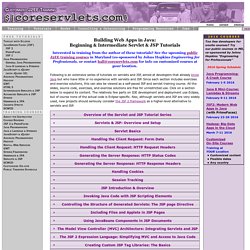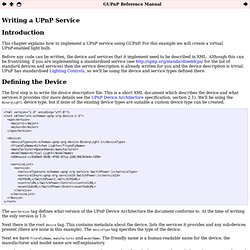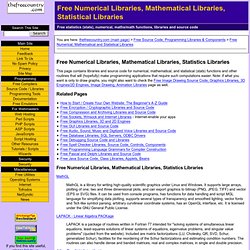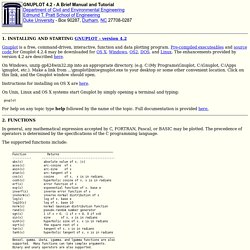

API. VoiceXML. Servlet API. Servlets are the Java platform technology of choice for extending and enhancing Web servers.

Servlets provide a component-based, platform-independent method for building Web-based applications, without the performance limitations of CGI programs. And unlike proprietary server extension mechanisms (such as the Netscape Server API or Apache modules), servlets are server- and platform-independent. This leaves you free to select a "best of breed" strategy for your servers, platforms, and tools.
Servlets have access to the entire family of Java APIs, including the JDBC API to access enterprise databases. Servlets can also access a library of HTTP-specific calls and receive all the benefits of the mature Java language, including portability, performance, reusability, and crash protection. Today servlets are a popular choice for building interactive Web applications. You might want to check out the latest information on JavaServer Pages (JSP) technology. Tomcat 6.0 - Documentation Index.
TomCat guide. Beginning and Intermediate-Level Servlet and JSP Tutorials. The beginning and intermediate-level tutorials on this page were originally based on the second edition of Marty's book Core Servlets and JavaServer Pages, but have been extensively upgraded since then, including coverage of servlets 3.0 and JSP 2.2 (e.g., for Tomcat 7).

The materials have been tested by Marty in live training courses in Canada, Australia, Puerto Rico, Japan, Cambodia, Mexico, India, Norway, the Philippines, and dozens of US venues. Click on a topic below to get the detailed tutorial, download the source code, or get the exercises on the topic. Practice is the key to learning, so if you serious about learning the technology, you should do at least some of the exercises in each topic before moving on to the next topic. These tutorials assume that you already know Java; they definitely move too fast for those without prior Java experience.
If you don't already know the Java language, please see the Java programming tutorial series. API JDOM v1.1. Writing a UPnP Service. This chapter explains how to implement a UPnP service using GUPnP.

For this example we will create a virtual UPnP-enabled light bulb. Before any code can be written, the device and services that it implement need to be described in XML. Although this can be frustrating, if you are implementing a standardised service (see for the list of standard devices and services) then the service description is already written for you and the device description is trivial. UPnP has standardised Lighting Controls, so we'll be using the device and service types defined there. The first step is to write the device description file. <? The specVersion tag defines what version of the UPnP Device Architecture the document conforms to. Next there is the root device tag. JAVA Training and Tutorials (by sun)
Oracle Technology Network > Java Software Downloads View All Downloads Top Downloads New Downloads What's New Java in the Cloud: Rapidly develop and deploy Java business applications in the cloud.

Essential Links Developer Spotlight Java EE—the Most Lightweight Enterprise Framework? Blogs Technologies. JMF 2.0 API. JMF Documentation. Documentation API Java Online. Free Numerical, Mathematical and Statistical Libraries and Source Code. MathGL MathGL is a library for writing high-quality scientific graphics under Linux and Windows.

It supports large arrays, plotting of one, two and three dimensional plots, and can export graphics to bitmap (PNG, JPEG, TIFF) and vector (EPS or SVG) files. It can be used from console programs, has functions for data handling and script MGL language for simplifying data plotting, supports several types of transparency and smoothed lighting, vector fonts and TeX-like symbol parsing, arbitrary curvilinear coordinate systems, has an OpenGL interface, etc. It is licensed under the GNU General Public License. LAPACK - Linear Algebra PACKage LAPACK is a package of routines written in Fortran 77 intended for "solving systems of simultaneous linear equations, least-squares solutions of linear systems of equations, eigenvalue problems, and singular value problems" (quoted from the website).
GSL - The GNU Scientific Library GSL is a numerical library that may be used in C and C++ programs. Sparselib++ Table of Contents: the Standard Template Library. IOstream Library. Gnuplot 4.0 Tutorial. Department of Civil and Environmental Engineering Edmund T.

Pratt School of Engineering Duke University - Box 90287, Durham, NC 27708-0287 1. INSTALLING AND STARTING GNUPLOT - version 4.2 Gnuplot is a free, command-driven, interactive, function and data plotting program. Pre-compiled executeables and source code for Gnuplot 4.2.4 may be downloaded for OS X, Windows, OS2, DOS, and Linux. On Windows, unzip gp424win32.zip into an appropriate directory, (e.g. Instructions for installing on OS X are here. On Unix, Linux and OS X systems start Gnuplot by simply opening a terminal and typing: gnuplot For help on any topic type help followed by the name of the topic. MSDN Library. SPIP.